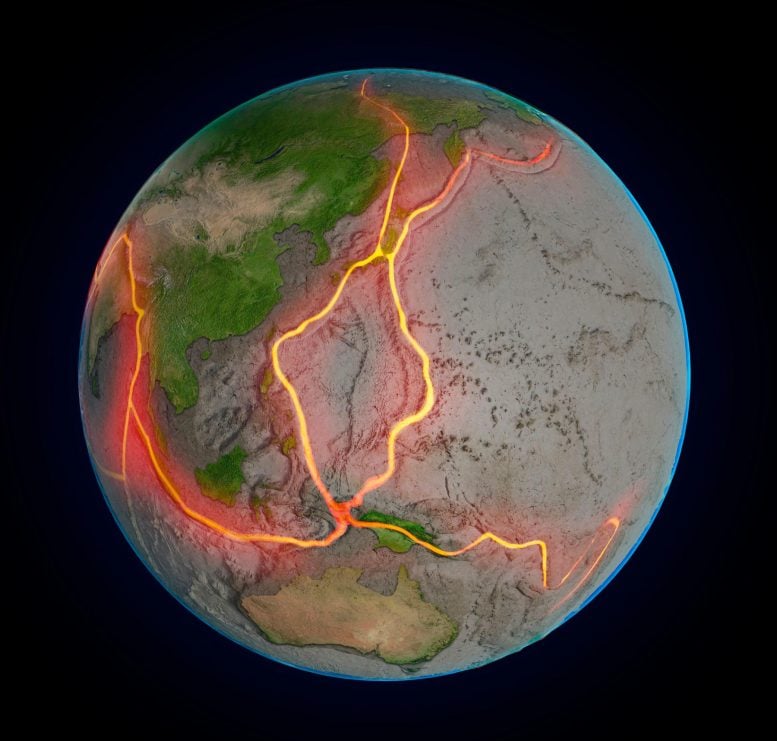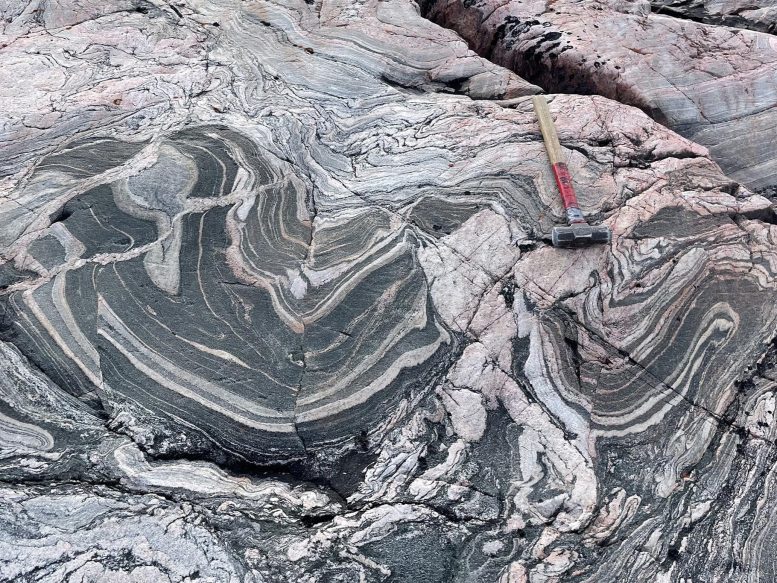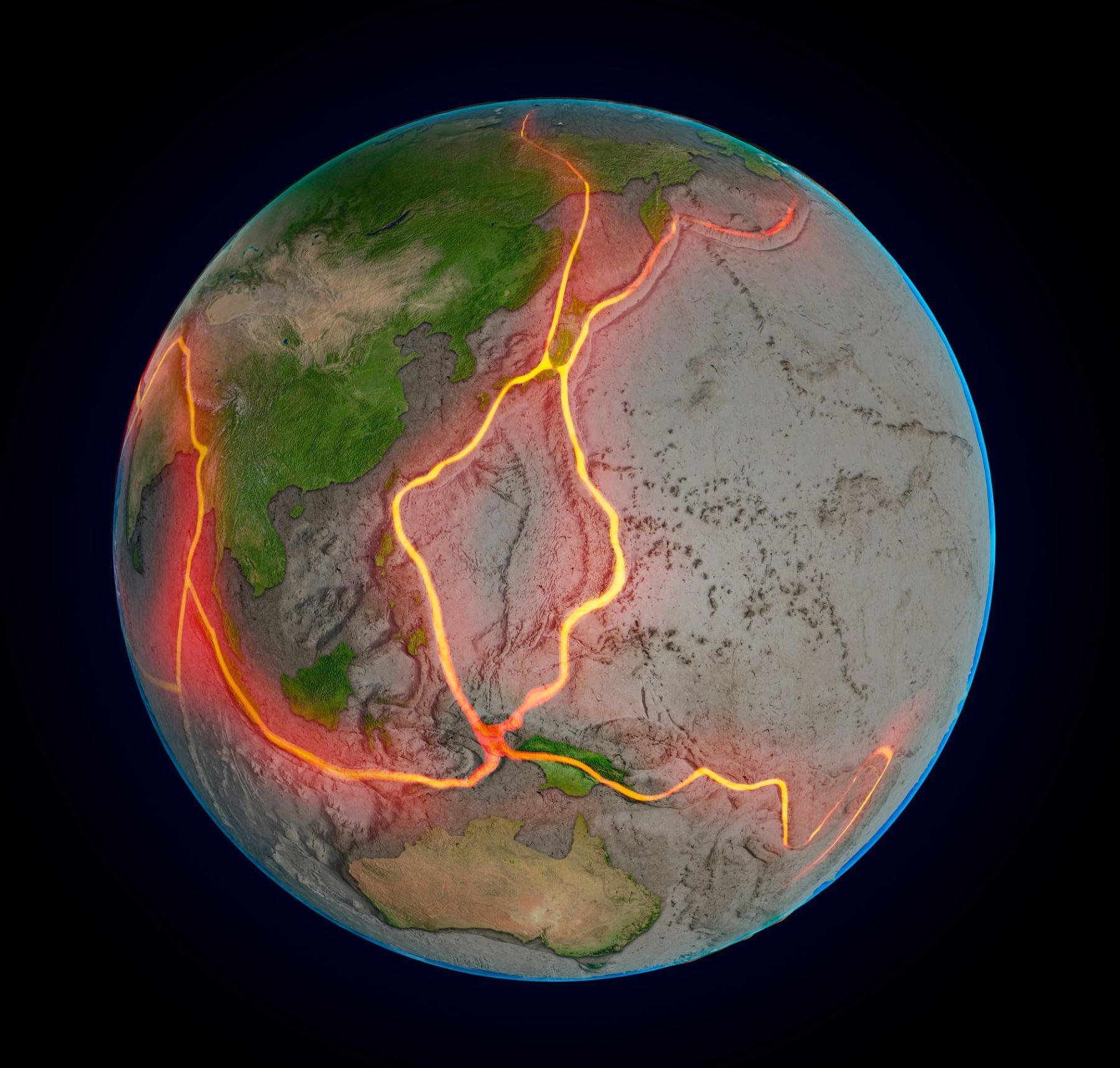
A new study by Penn State researchers suggests that cratons, ancient structures stabilizing Earth’s continents, formed around 3 billion years ago through processes initiated by the atmospheric weathering of rock, not just the emergence of stable landmasses. This challenges traditional views and has implications for understanding planetary evolution and the conditions conducive to life.
Ancient, vast stretches of continental crust known as cratons have stabilized Earth’s continents for billions of years through shifts in landmasses, mountain formation, and ocean development. Scientists from Penn State have suggested a new mechanism that could explain the formation of cratons around 3 billion years ago, shedding light on a long-standing question in Earth’s geological history.
The scientists reported in the journal Nature that the continents may not have emerged from Earth’s oceans as stable landmasses, the hallmark of which is an upper crust enriched in granite. Rather, the exposure of fresh rock to wind and rain about 3 billion years ago triggered a series of geological processes that ultimately stabilized the crust — enabling the crust to survive for billions of years without being destroyed or reset.
The findings may represent a new understanding of how potentially habitable, Earth-like planets evolve, the scientists said.
Implications for Planetary Evolution
“To make a planet like Earth you need to make continental crust, and you need to stabilize that crust,” said Jesse Reimink, assistant professor of geosciences at Penn State and an author of the study. “Scientists have thought of these as the same thing — the continents became stable and then emerged above sea level. But what we are saying is that those processes are separate.”
Cratons extend more than 150 kilometers, or 93 miles, from the Earth’s surface to the upper mantle — where they act like the keel of a boat, keeping the continents floating at or near sea level across geological time, the scientists said.
Weathering may have ultimately concentrated heat-producing elements like uranium, thorium, and potassium in the shallow crust, allowing the deeper crust to cool and harden. This mechanism created a thick, hard layer of rock that may have protected the bottoms of the continents from being deformed later — a characteristic feature of cratons, the scientists said.
Geological Processes and Heat Production
“The recipe for making and stabilizing continental crust involves concentrating these heat-producing elements — which can be thought of as little heat engines — very close to the surface,” said Andrew Smye, associate professor of geosciences at Penn State and an author of the study. “You have to do that because each time an atom of uranium, thorium, or potassium decays, it releases heat that can increase the temperature of the crust. Hot crust is unstable — it’s prone to being deformed and won’t stick around.”
As wind, rain and chemical reactions broke down rocks on the early continents, sediments and clay minerals were washed into streams and rivers and carried to the sea where they created sedimentary deposits like shales that were high in concentrations of uranium, thorium, and potassium, the scientists said.

These ancient metamorphic rocks called gneisses, found on the Arctic Coast, represent the roots of the continents now exposed at the surface. The scientists said sedimentary rocks interlayered in these types of rocks would provide a heat engine for stabilizing the continents. Credit: Jesse Reimink
Collisions between tectonic plates buried these sedimentary rocks deep in the Earth’s crust where radiogenic heat released by the shale triggered the melting of the lower crust. The melts were buoyant and ascended back to the upper crust, trapping the heat-producing elements there in rocks like granite and allowing the lower crust to cool and harden.
Cratons are believed to have formed between 3 and 2.5 billion years ago — a time when radioactive elements like uranium would have decayed at a rate about twice as fast and released twice as much heat as today.
The work highlights that the time when the cratons formed on the early middle Earth was uniquely suited for the processes that may have led them to becoming stable, Reimink said.
“We can think of this as a planetary evolution question,” Reimink said. “One of the key ingredients you need to make a planet like Earth might be the emergence of continents relatively early on in its lifespan. Because you’re going to create radioactive sediments that are very hot and that produce a really stable tract of continental crust that lives right around sea level and is a great environment for propagating life.”
The researchers analyzed uranium, thorium, and potassium concentrations from hundreds of samples of rocks from the Archean period, when the cratons formed, to assess the radiogenic heat productivity based on actual rock compositions. They used these values to create thermal models of craton formation.
“Previously people have looked at and considered the effects of changing radiogenic heat production through time,” Smye said. “But our study links rock-based heat production to the emergence of continents, the generation of sediments, and the differentiation of continental crust.”
Typically found in the interior of continents, cratons contain some of the oldest rocks on Earth, but remain challenging to study. In tectonically active areas, mountain belt formation might bring rocks that had once been buried deep underground to the surface.
But the origins of the cratons remain deep underground and are inaccessible. The scientists said future work will involve sampling ancient interiors of cratons and, perhaps, drilling core samples to test their model.
“These metamorphosed sedimentary rocks that have melted and produced granites that concentrate uranium and thorium are like black box flight recorders that record pressure and temperature,” Smye said. “And if we can unlock that archive, we can test our model’s predictions for the flight path of the continental crust.”
Reference: “Subaerial weathering drove stabilization of continents” by Jesse R. Reimink, and Andrew J. Smye, 8 May 2024, Nature.
DOI: 10.1038/s41586-024-07307-1
Penn State and the U.S. National Science Foundation provided funding for this work.

Daisy Hips is a science communicator who brings the wonders of the natural world to readers. Her articles explore breakthroughs in various scientific disciplines, from space exploration to environmental conservation. Daisy is also an advocate for science education and enjoys stargazing in her spare time.







